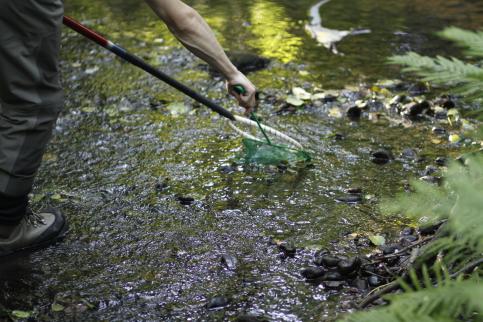Method

Underyearling brown trout fry were caught in two small coastal stream in western Sweden, Norumsån and Stenungeån ( 58 ̊ N 11 ̊ E). They where caught by electric fishing, a widely used catch method known for its low-harm effect when properly applied. All fish were transported to the Department of Biological and Environmental Sciences at th University of Gothenburg.
In laboratory, fish were weighted and measured. They were also tagged with visible implant elastomeres, a color injection, to be able to individually identify them. The fish were then divided into two treatment groups. One restricted group, that was starved for a period and then refed to saturation and one control group, that was fed to satoruration for the whole laboratory period.
The activity level of each individual was tested twice, once before treatment start and one during refeeding. All behavioural tests was conducted in an open field environment were the movement of the fished were analysed during a ten minute period.
After the laboratory period the fish were released back into their native stream and subsequently recaptured after approximately one month to check for survival.

Statistics
All statistical analyses were made in R Studio (R Core team, 2013). Students T-test was used to analyse treatment effects on specific growth rate (SGR) in length and weight as well as condition factor (K) for the three different times of measuring. Individual consistency in activity between the two behavioural trials was analysed using ordinal linear regression. Ordinal linear regression was also used when analyzing associations between activity and the variables; length, weight, K. If associations between traits differed between treatments an ANCOVA was used to investigate regression line slope differences. All variables were tested for normality and equal variance.
A linear mixed model fitted with maximum likelihood and a random effect on the intercept was used to analyze the effect of treatment on change in activity and boldness over time. If significant results were discovered paired t-tests were used to identify the direction of the difference.
The effect on survival under natural conditions was analyzed using a generalized linear model (GLM).
Responsible for this page:
Director of undergraduate studies Biology
Last updated:
06/04/14
